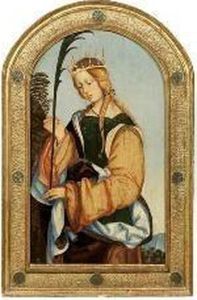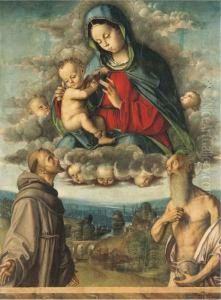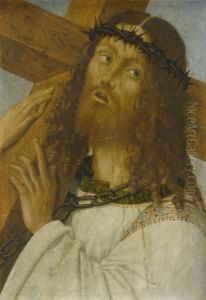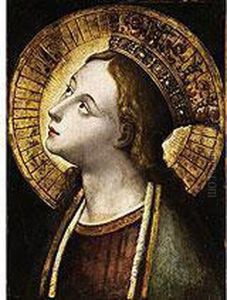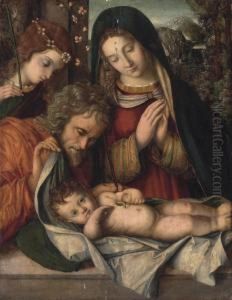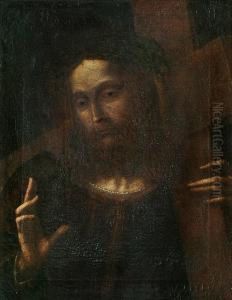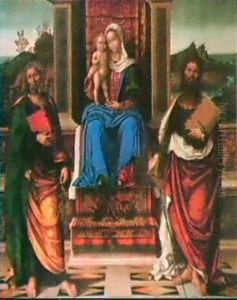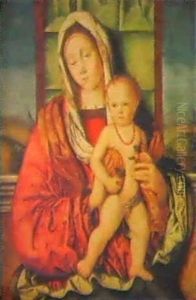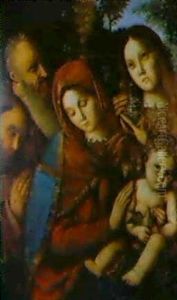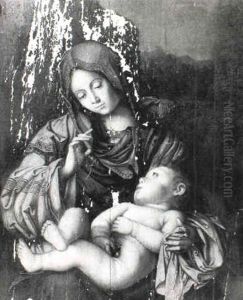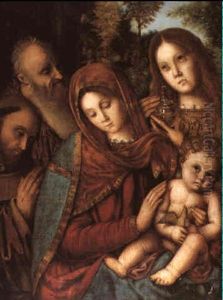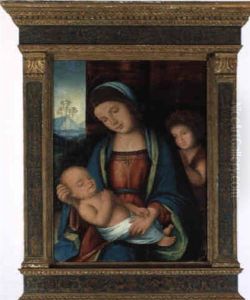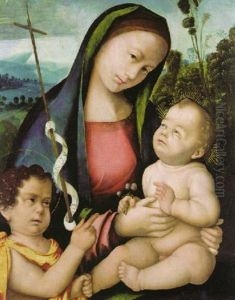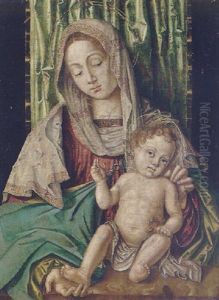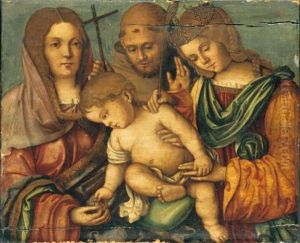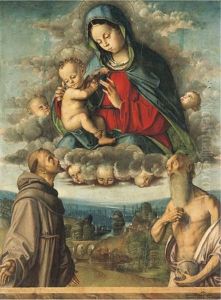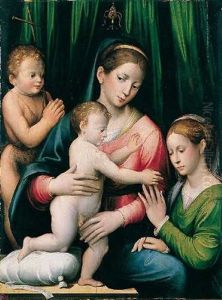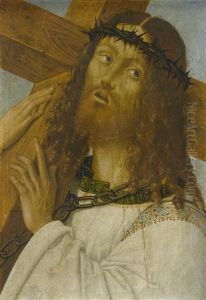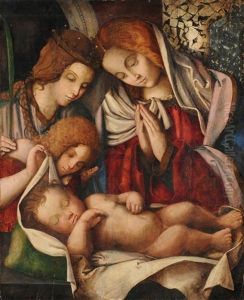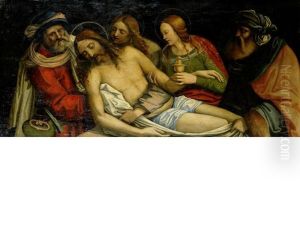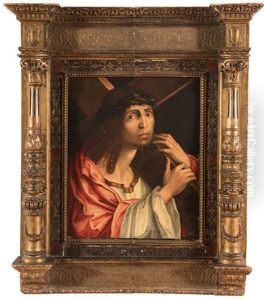Francesco Zaganelli Paintings
Francesco Zaganelli, also known as Francesco da Cotignola, was an Italian painter active during the Renaissance period. He was born in the town of Cotignola, near Ravenna, in the Romagna region of Italy, around the late 1460s or early 1470s. His exact date of birth is not documented, but his artistic activity suggests this rough timeframe.
Francesco was part of the Zaganelli family, which included his brother Bernardino Zaganelli, with whom he often collaborated on various artistic projects. The brothers are sometimes referred to collectively as the Zaganelli of Cotignola. Their work is characteristic of the transition from the late Gothic to the early Renaissance style in Northern Italy.
The Zaganelli brothers were influenced by the styles of other prominent artists of their time, such as Lorenzo Costa and Francesco Francia, who were active in the nearby city of Bologna. The influence of the Bolognese school is evident in their use of color and the delicate treatment of figures.
Francesco's individual contributions are difficult to distinguish from those of his brother due to their collaborative nature of work. However, it is known that they were highly regarded in their time, receiving commissions from important religious and secular patrons. Their artwork included altarpieces, frescoes, and panel paintings, many of which depicted religious scenes and figures, as was typical for the period.
One of the most notable works attributed to Francesco Zaganelli is the altarpiece of the Cathedral of San Giovanni in Ravenna, which he completed after the death of his brother Bernardino. This work showcases his skill in composition and his ability to create a harmonious integration of figures and space.
Francesco's death is recorded in 1532. His contributions to the Italian Renaissance, though perhaps not as widely recognized as those of the period's leading figures, reflect the rich artistic environment of Northern Italy during the early 16th century. Today, his works can be found in various Italian churches and museums, contributing to the legacy of the Renaissance art movement.
